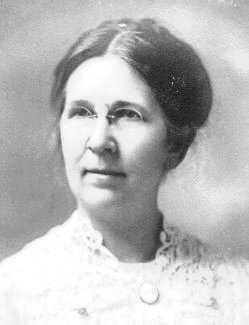Rosa Smith Eigenmann

Rosa Smith Eigenmann (October 8, 1858 – January 12, 1947) was the first notable female ichthyologist,the branch of zoology devoted to the study of fish, first publishing in her own right, she later collaborated with her husband Carl H. Eigenmann, and some 150 species of fish are today credited "Eigenmann & Eigenmann" as a result.
Biography

She was born in Monmouth, Illinois, the last of nine children. While her family was originally from California, they had moved to Illinois to start a newspaper, but Rosa was frail and in poor health, so they returned to California, living in San Diego. She was interested in the local natural history from an early age, and joined the San Diego Society of Natural History.
David Starr Jordan visited San Diego in 1879, and met Rosa Smith then, either at a Society meeting, or because he rented a horse and buggy from her father. At about this time, she had discovered the blind goby Othonops eos living in caves underneath Point Loma Peninsula. Jordan was impressed and encouraged her to study with him at Indiana University; she spent two years there, but had to return home due to an illness in the family. While there, she met fellow student Carl, and continued corresponding with him after returning to San Diego, as well as publishing formal descriptions of the blind goby and other fish.
Carl came out to California after receiving his bachelor's degree, and they married on August 20, 1887. They then visited Harvard University, where they studied its collections, and Rosa became the first woman allowed to attend graduate-level classes at Harvard. They also published the first of many collaborative works.
After several more years in San Diego, Carl became a professor at Indiana University in Bloomington. Rosa continued to collaborate with him, but less frequently; of their five children, one daughter was disabled and a son was eventually institutionalized, a burden that was mostly borne by Rosa. When Carl suffered a stroke in 1927, the family returned to San Diego; after he died in April of that year, she remained there, but was no longer scientifically active.
She died on January 12, 1947 in San Diego.
References
|